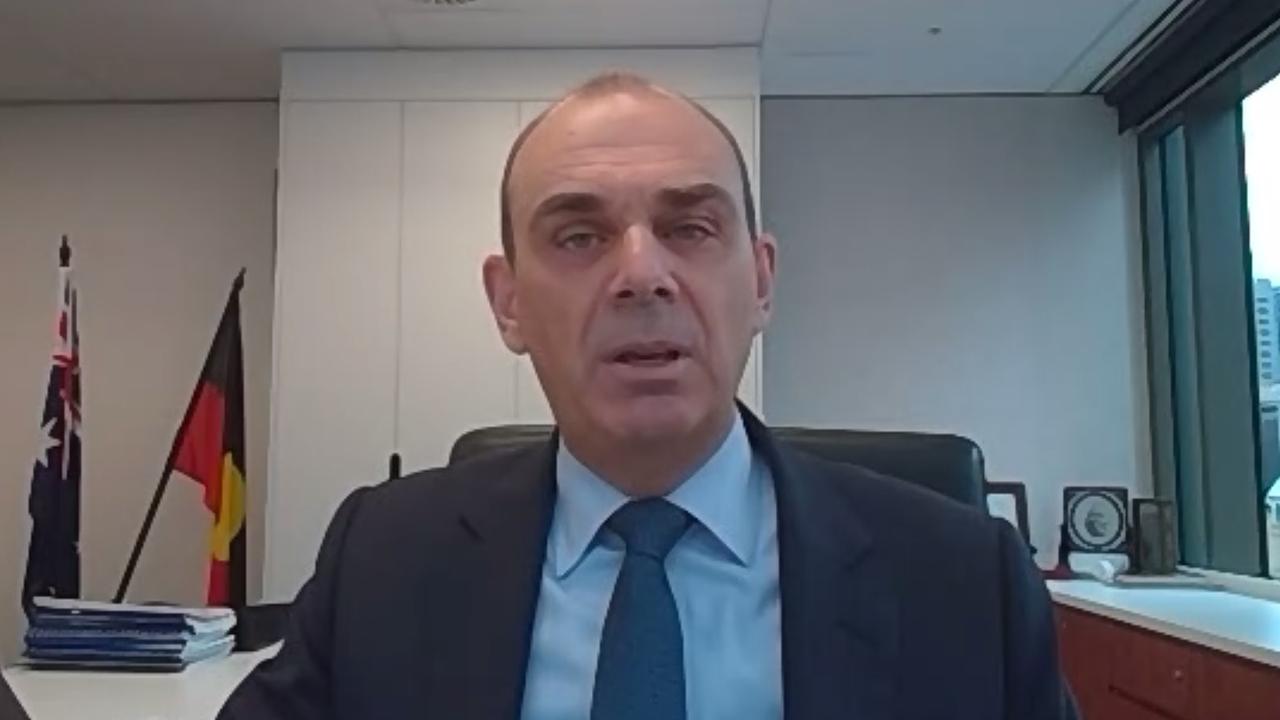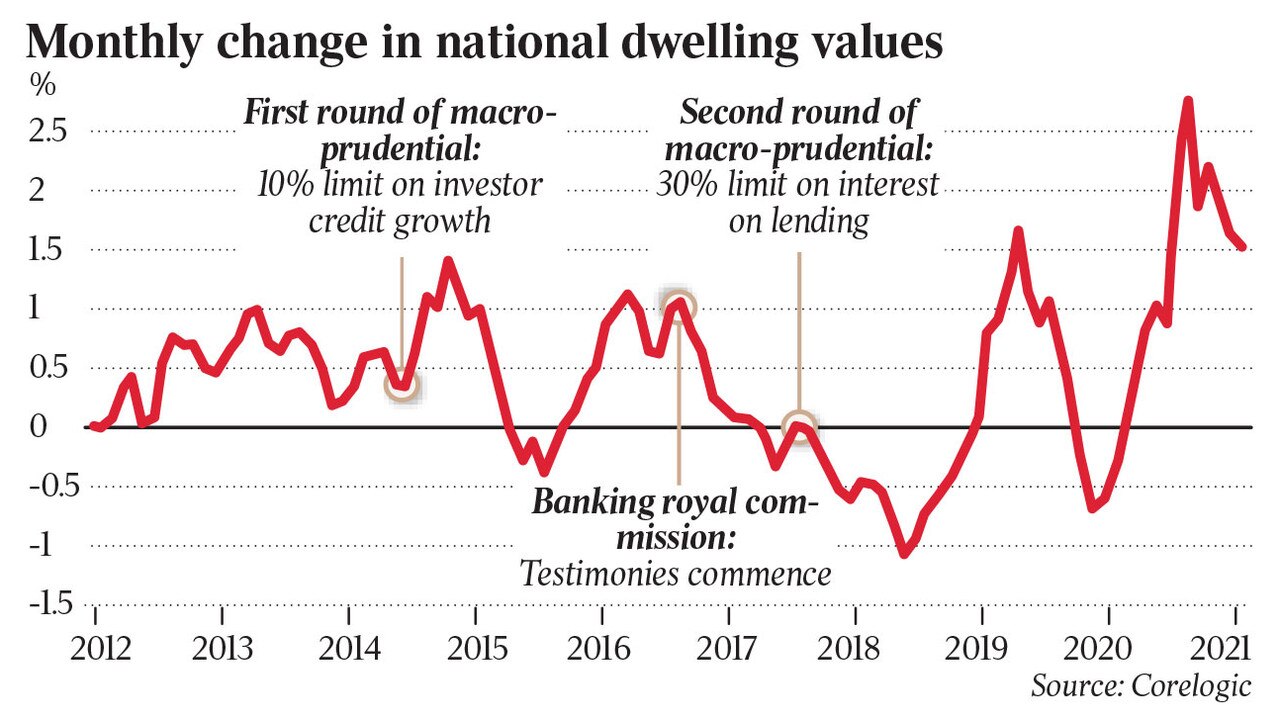Concern but no action yet on home lending: APRA
Bank regulator concerned about rise in high debt-to-income lending, but stops short of flagging moves to cool homes market.

The nation’s banking regulator has expressed concern about borrowers taking out large levels of debt, but stopped short of saying policy measures were required to cool housing market activity.
Speaking at a parliamentary committee on economics on Friday, Australian Prudential Regulation Authority chairman Wayne Byres Byres was peppered with questions on a range of topics including the nation’s bumper housing market.
“We are weighing up a raft of different considerations. There are risk metrics that tell us different things. The issue of concern at present is that there is an increase in high debt-to-income lending, but it’s offset against a number of other metrics which are going in a more positive direction from a prudential perspective,” he said.
“Credit growth is picking up. In the most recent quarter the risk metrics that we look at are sort of a mixed picture, interest-only loans have come down as a share of new lending, high LVR (loan-to-value ratio) loans have come down … offset balances are high and banks are not overriding policies to any serious degree.”

Mr Byres said banks’ balance sheets remained strong and lending standards were being sustained with no obvious “poor quality” lending happening, although the situation was complicated by lockdowns across several states and negligible population growth.
The debate about rising risks emerging and unsustainable price growth in the housing market has been reignited this week by signs lockdowns will begin to lift next month in Sydney and Melbourne. That is mooted to occur as double dose vaccination rates hit key 70 per cent thresholds.
The latest REA report this week found that the volume of email inquiries to agents on realestate.com.au reached a historic high in August. While the rate of house price growth slowed in August, the latest CoreLogic report showed residential property prices had risen almost 11 times faster than wages growth over the past year.
Australian housing values are 15.8 per cent higher so far this year, and are 18.4 per cent above levels in August 2020.
Two of the nation’s bank chiefs on Thursday predicted economic growth will recover strongly from a September quarter contraction, with National Australia Bank boss Ross McEwan saying some businesses were doing well in a multi-speed economy while others were hurting.
Mr McEwan and Westpac chief Peter King separately expressed an optimistic economic outlook at the economics committee.
On potential regulatory measures to curb growth in the housing market, both CEOs urged that a further assessment of the sector should occur over coming months as Covid-19 restrictions eased before any action was taken.
Responding to those comments, Mr Byres said: “Certainly we’re cautious of the current environment and the way it could play out … the key issue at present that we’re watching is less prudential and more macro. It’s really looking at household debt levels and the extent to which there is potential for household debt levels to run well ahead of income growth levels for an extended period.”
He noted APRA and the Reserve Bank of Australia would be uncomfortable with that scenario.
Jefferies analyst Brian Johnson highlighted APRA data which showed the proportion of loans being written at a ratio of more than six times the borrower’s income rose to 21.9 per cent in the June quarter, from 19.1 per cent. He said the rise “could pose risks” when the RBA began normalising rates in 2024.
Mr Johnson said while the data was not yet alarming, other policy settings by regulators may change when lockdowns lifted.
“Given house price appreciation, there is the risk the RBA introduces macro-prudential housing brakes ( LVR or debt-to-income restrictions) and/or APRA lifts mortgage servicing assessment ‘stressed rate’ from 5 per cent back to 7 per cent,” he added.
APRA’s quarterly figures showed the rise in loans being written at debt-to-income ratios of more than six, reflected the biggest quarterly jump since collection of the data began.
Mr Byres said there were a number of policy tools APRA could employ in the housing market, but he was mindful of unintended consequences on groups such as first home buyers.
He noted that during the last housing market boom APRA hadn’t opted to introduce LVR limits, which essentially restrict lending with lower levels of deposits, because that would have caused the “most severe” impact on first home buyers.
“I don’t think anyone sees first home buyers as the source of the problem,” Mr Byres added.
APRA has in the past placed limits on lending to investors and interest-only mortgages, and can also enforce debt-to-income levels and changes to interest rate buffers banks use to determine loan serviceability.
Mr Byres was also asked about risks related to large investors such as Vanguard and BlackRock owning large stakes across financial stocks.
“We haven’t yet seen any evidence that those largest shareholders are pursuing agendas or are undertaking activities that are different from the interests of the broader shareholder population,” he said, but noted climate-related risks were a focus for many investors.
“Investors are looking much harder at how financial institutions, but also the broader corporate sector, is responding to climate risks.”
APRA’s parliamentary committee appearance coincided with the regulator telling banks to reduce their reliance on the RBA’s $139bn Committed Liquidity Facility to zero by the end of 2022, subject to financial market conditions.
APRA wants banks to hold sufficient levels of unencumbered high-quality liquid assets so the facility - which acts as a backstop for bank funding - is not required.
Originally published as Concern but no action yet on home lending: APRA





